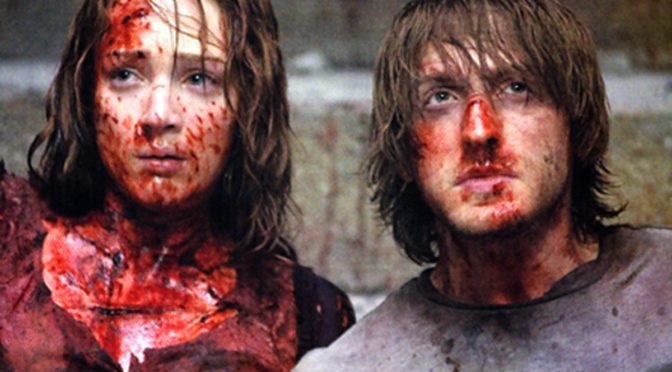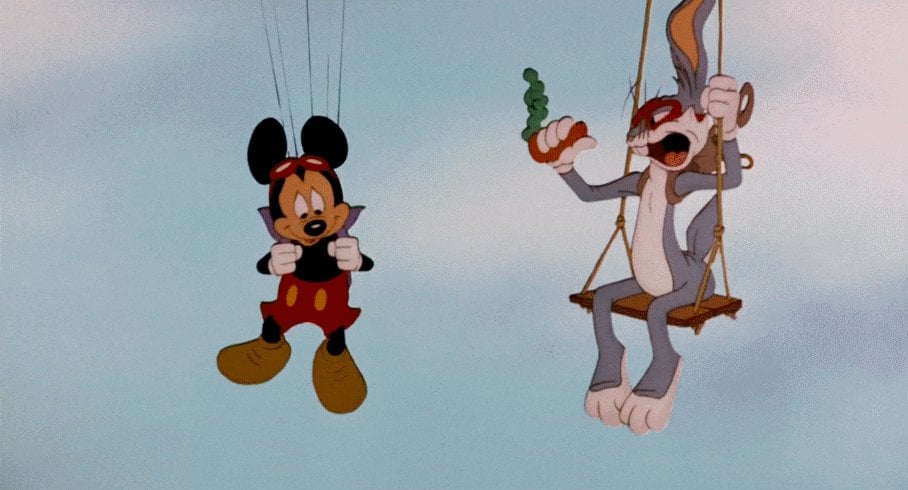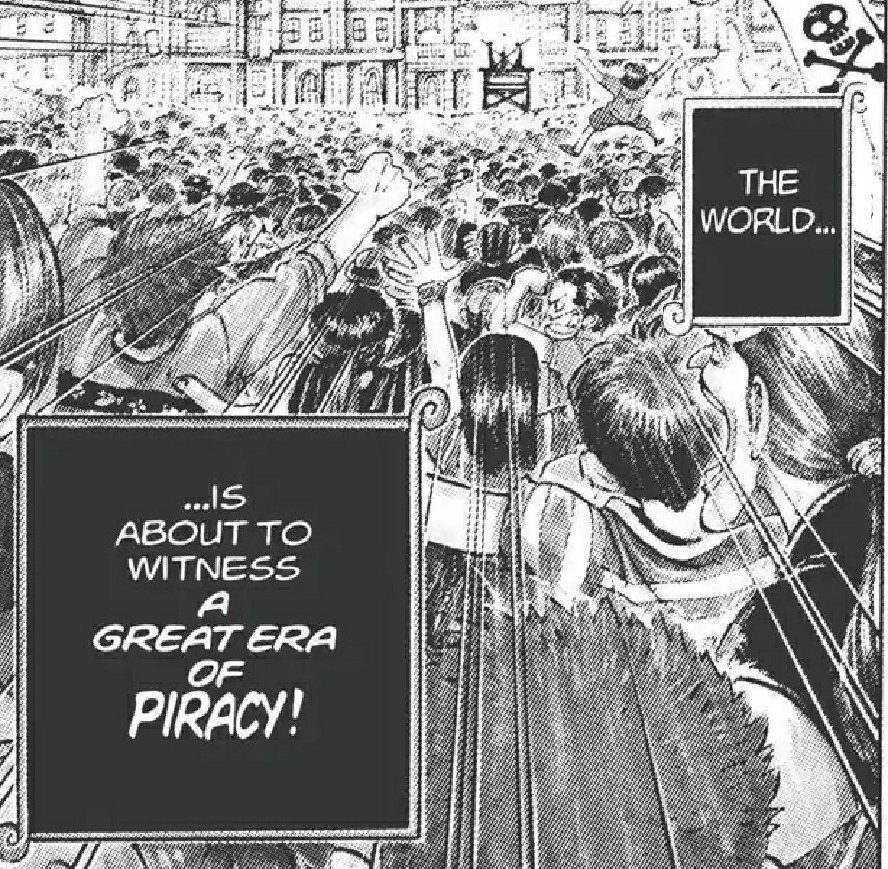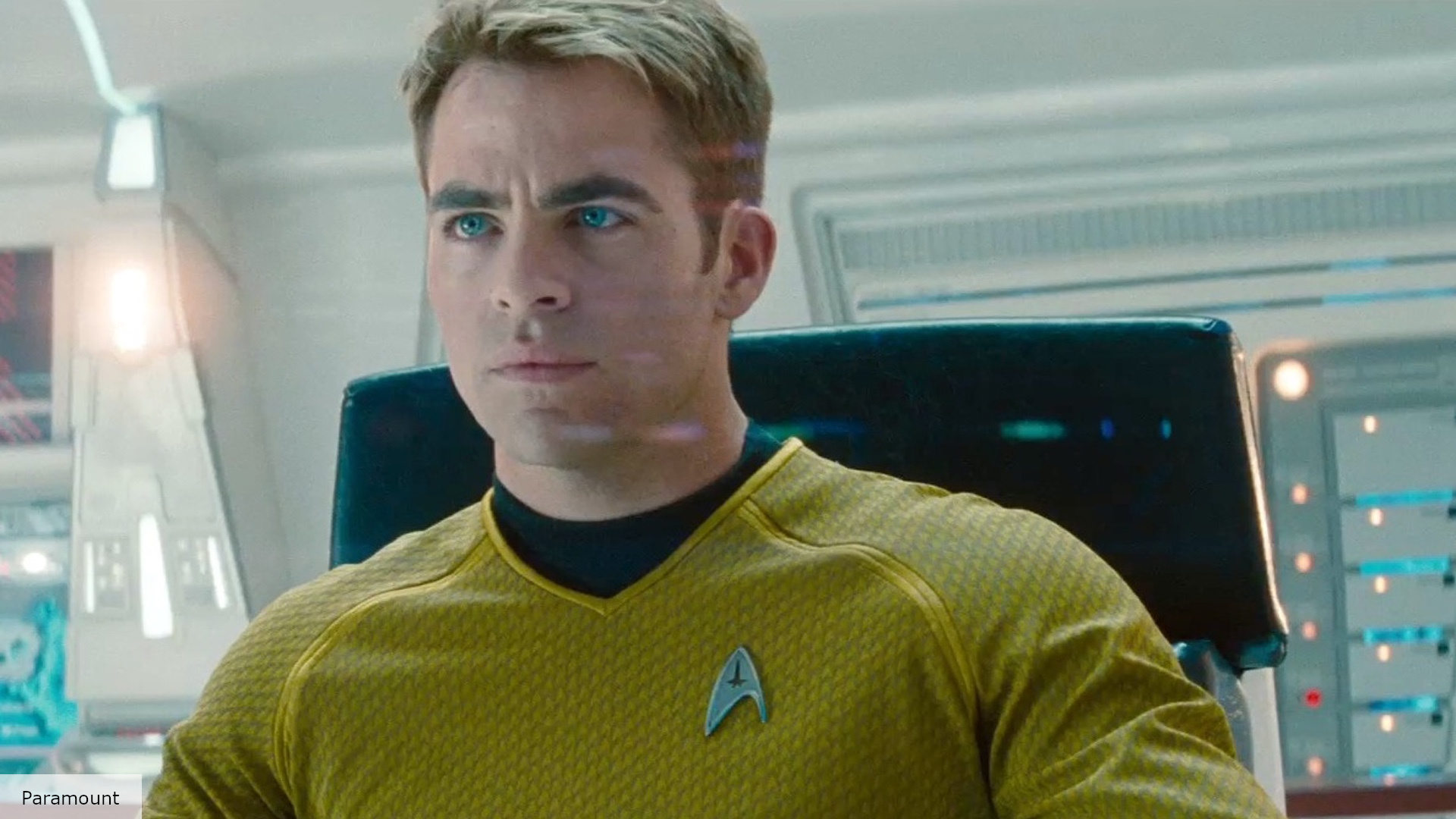“We rig the game as much as we have to, but in the end, if they don’t transgress they can’t be punished.”
For the life of me, I cannot think of any film or TV show episode where the opening and closing scenes are as vastly different as they are in The Cabin in the Woods (the only thing that comes close might be the Simpsons episode “The Twisted World of Marge Simpson”). But Drew Goddard‘s excellent, singular film (which he co-wrote with Joss Whedon) is built on a basis of incongruity so strong that neither scene feels out of place. Cabin operates with a theatrically literal kitchen-sink mentality, but it’s so much more than a barrage of horror movie imagery. What if, the film asks, all the horrible things that happen in a horror movie are all for a good reason?
Let’s talk about that opening, which in its deadpan innocuousness might be one of the ballsiest ways anyone has ever started a horror film. We’re introduced first not to the cast of attractive twenty-somethings, but to office drones Sitterson and Hadley (man-gods Richard Jenkins and Bradley Whitford). They make small talk about baby-proofing Hadley’s apartment while Sitterson fumbles with a coffee cup. Hadley turns to Sitterson and asks “Are you listening to me?” Freeze frame, huge blood-red titles: THE CABIN IN THE WOODS. I’ve seen this movie a half dozen times, and that moment is screamingly funny every time. The entire opening was dreamed up by Whedon and Goddard to disorient the audience to the point that people would think they walked into the wrong theater, but it does more than that. It introduces two important characters, sure, but it shows the mundanity of their office life, which will seem nearly grotesque as the film progresses.
The titular cabin is a vacation destination for Dana (Kristen Connolly), Jules (Anna Hutchison), Curt (Chris Hemsworth), Holden (Jesse Williams), and Marty (Fran Kranz). The actors aren’t given much in the way of weighty dialogue, but that’s ok – intended, actually – because, as the film explains, they are literally there to fill the roles of archetypes. Kranz, however, is terrific. Marty is the resident stoner, and he could have been a one-note ersatz Shaggy, but Kranz imbues him with a strange sense of wisdom and a perfect deadpan delivery. Kranz is the heart of The Cabin in the Woods, and consistently shows why Sitterson and Hadley were wrong to underestimate him. (He also does great work in the Whedon-directed Much Ado About Nothing, which you should seek out.)
The Cabin in the Woods could have been a decent throwaway horror film, if that’s al it wanted to be (even its title is generic by design). But the involvement of Sitterson and Hadley, and their hellish office, makes Cabin the rare film that embraces its clichés even while subverting them (it’s like Scream in that regard, but not so winkingly self-referential). The scene in the cellar, with everyone tinkering with different objects – a conch shell, a music box, a diary – works even better on a rewatch. Once you know that each of these totems conjures a different monster, it makes you think just how many different possible versions there are of Cabin (it also affords Marty one of the film’s best lines: “I’m drawing a line in the fuckin’ sand here: do not read the Latin“).
The deaths are somehow both brutal and hilarious. Goddard is uniquely talented at handling multiple tones at once; for evidence, look no further than the shot of Jules making out with a mounted wolf’s head, which manages to be creepy, funny, and very sexy all at once. When Curt attempts to jump a gorge on a dirt bike, he smashes directly into a force field, sliding down to his death in grisly fashion. So why do I laugh every time? Maybe it’s because Curt’s death comes right after his big heroic speech, which Hemsworth sells with the perfect inflection of someone unaware of anything bigger than himself.
It’s in the last twenty minutes that the film becomes a classic. Marty and Dana infiltrate the control building, and in an instantly iconic shot, see row after row of possible monsters they could have summoned (“They made us choose how we would die”), among them a ghost, a werewolf, a ballerina with a face of teeth, and a Cenobite from Hellraiser (on Sitterson’s whiteboard, we see that they also could have summoned Deadites from Evil Dead or Kevin the cannibal from Sin City). Cabin boasts one of the all-time greatest massacres, after Dana and Marty purge the cells of their ghoulish inhabitants. It’s funny and scary in only a way that this film can pull off without leaning too far in one direction, but it also shows Goddard and Whedon’s love for the genre. They didn’t make Cabin to point out how stupid horror movies are; if you get rid of Sitterson and Hadley then this is just a well-made horror movie about attractive college students trying to fend of resurrected pain-worshipping hillbillies.
But The Cabin in the Woods wouldn’t work if it were mean-spirited. I wouldn’t even go so far as to call it a parody, because there are some serious scares here. Whedon and Goddard love the genre so much that they gave a small but pivotal role to Sigourney Weaver, whose very presence lends gravity to the proceedings (Weaver was reportedly happy to be in a movie that features a werewolf, which is a weird thing to check off your bucket list). I mean, if you’re going to have an exposition dump, you could find worse people to deliver it than Ellen goddamn Ripley.
This movie begins in an office. It ends with the destruction of the world, the awakening of long-slumbering eldritch horrors incomprehensible by man. It encapsulates every aspect of horror, from the intimate to the cosmic. Horror films will be around as long as film is around, but they’ll never get a better love letter than The Cabin in the Woods.
10/1: Dawn of the Dead (2004)
10/2: The Exorcist
10/3: Pontypool
10/4: Hocus Pocus
10/5: The Orphanage
10/6: Rosemary’s Baby
10/7: Alien
10/8: Scream series
10/9: Scream series
10/10: Cujo
10/11: The Cabin in the Woods
10/12: Pulse
10/13: The Babadook
10/14: Friday the 13th
10/15: The Last House on the Left (both versions)
10/16: The Thing (both versions)
10/17: Little Shop of Horrors
10/18: Hush
10/19: Silent Hill
10/20: The Shining
10/21: Funny Games (2007)
10/22: Evil Dead series
10/23: Evil Dead series
10/24: The Mist
10/25: The Ninth Gate
10/26: The Fly
10/27: A Nightmare on Elm Street
10/28: The Nightmare Before Christmas
10/29: 28 Days Later/28 Weeks Later
10/30: It
10/31: Halloween (either version)










